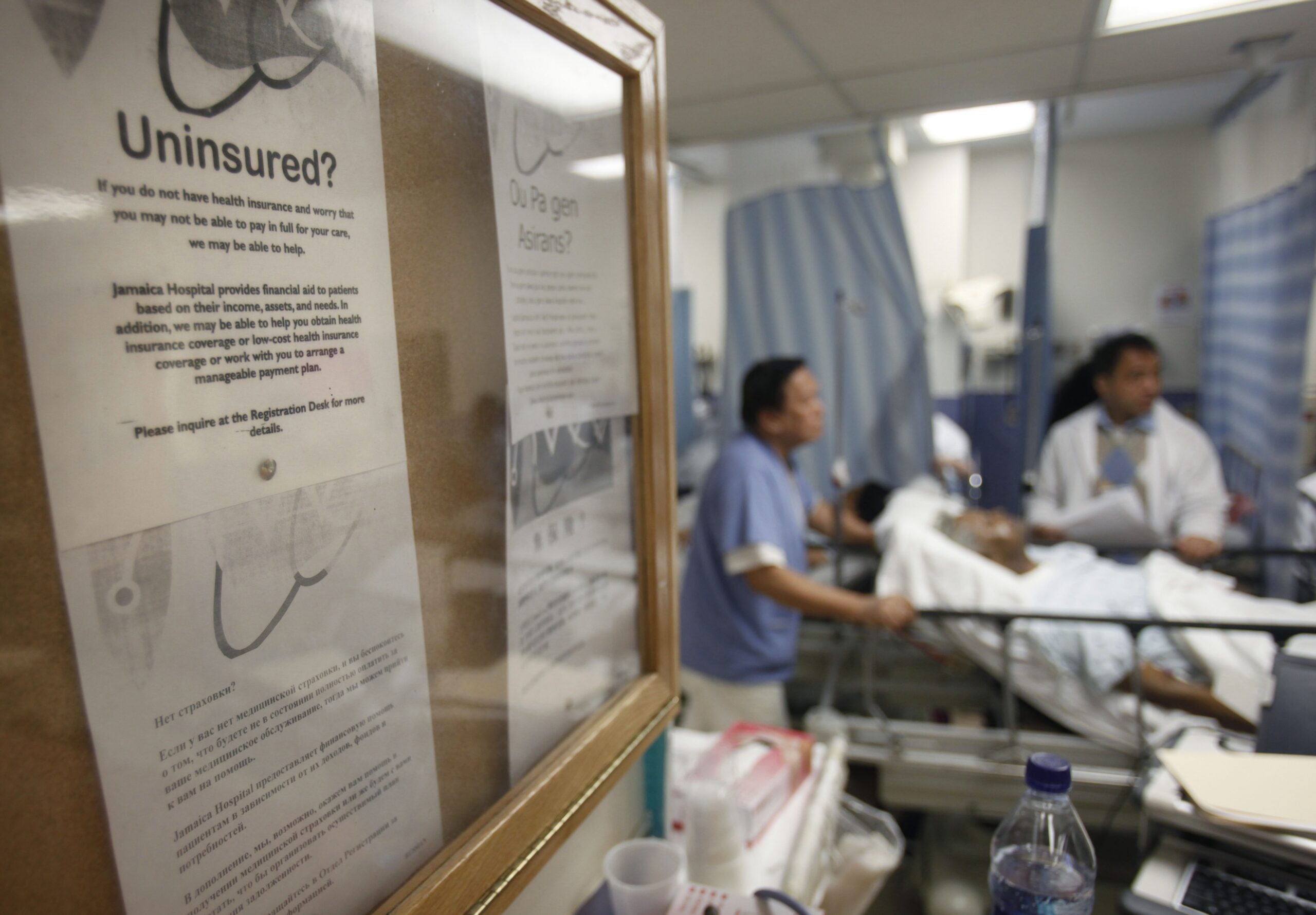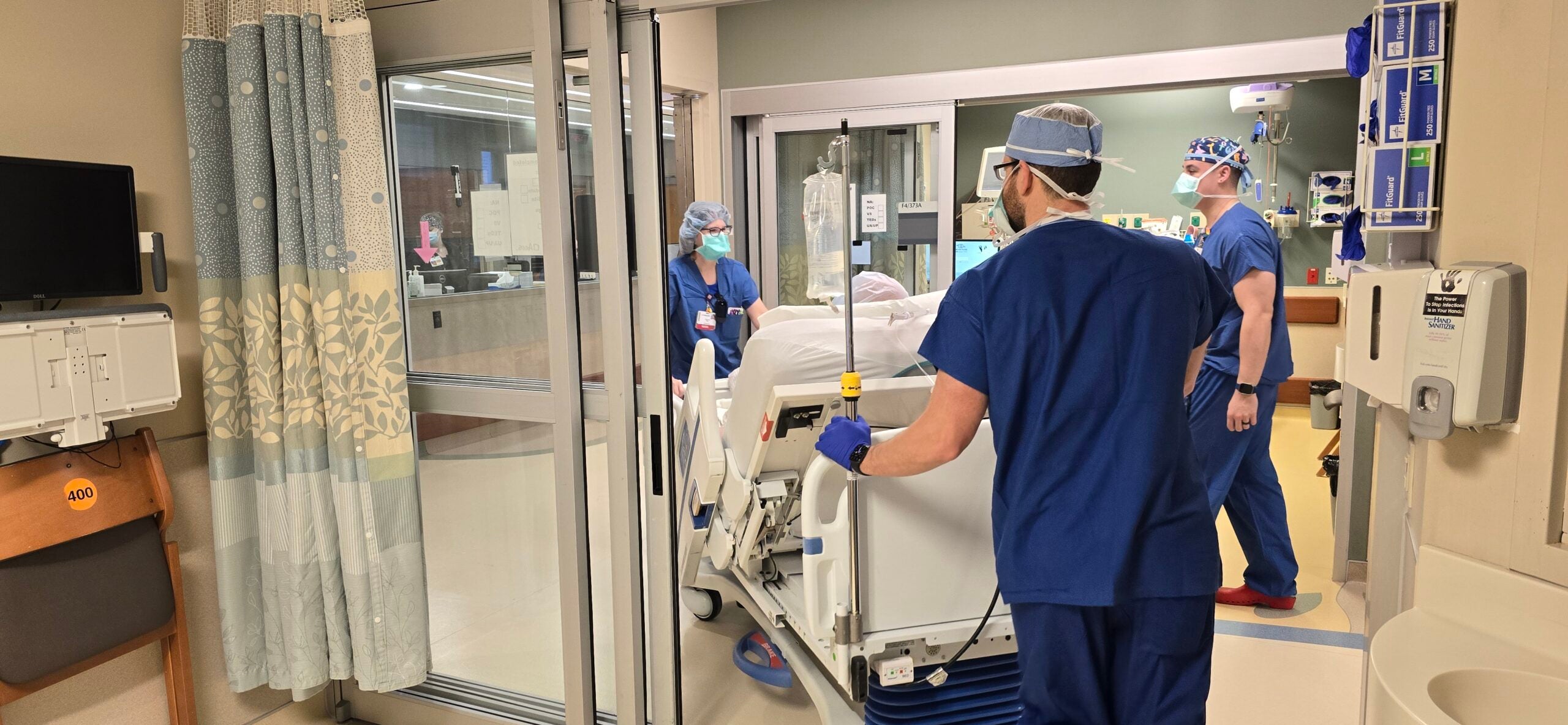A major health care system in central Wisconsin is laying off more than 300 employees and leaving 500 vacant jobs unfilled amid economic headwinds that are challenging the industry.
Citing increased labor costs, high supply expenses and reductions in reimbursements, Marshfield Clinic Health System last week announced plans to lay off 346 employees, almost 3 percent of its staff.
Of the 346 employees, 222 are based in Wisconsin, according to a letter the health system sent to the state Department of Workforce Development on March 1.
News with a little more humanity
WPR’s “Wisconsin Today” newsletter keeps you connected to the state you love without feeling overwhelmed. No paywall. No agenda. No corporate filter.
Marshfield Clinic said the anticipated layoff date is set for May 19. The affected Marshfield Clinic employees will be a mix of administrative positions and medical staff. It’s unclear which open positions are being left unfilled.
In a statement, Marshfield Clinic CEO Susan Turney said the system is “not immune to the immense pressure and unprecedented challenges” facing the health care industry.
“Reducing staff is always painful. This is ultimately about preserving the long-term efficiency and sustainability of our organization,” Turney said. “We are committed to supporting all affected employees with resources and services to aid them in their transition, including assistance searching for other roles within the Health System.”
Marshfield Clinic declined to comment further on the layoffs, which come after the health system consolidated Sexual Assault Nurse Examiner programs in Marshfield and Weston, and amid merger talks with Minnesota-based Essentia Health. In September 2022, the health care provider was reportedly on pace to see millions in financial losses for the year, according to WSAW-TV.
Hospitals faced with cost and revenue pressures
Eric Borgerding, president of the Wisconsin Hospital Association, said he’s never seen the combination of expense and revenue pressures facing hospitals right now.
He said labor costs have exploded since the start of the pandemic, as have pharmaceutical and equipment costs.
“The costs are increasing rapidly on the one side, while the ability of hospitals to recoup those costs has been significantly reduced,” he said.
On the revenue side, the reimbursement hospitals receive from Medicare and Medicaid only account for about 67 cents out of every dollar a hospital spends taking care of a patient, Borgerding said.
He said Medicaid and Medicare make up the majority of revenue many hospitals receive, and the state’s aging population is expected to cause that number to continue growing.
“Sixty five percent or so of hospital revenue is coming from two insurance programs that pay hospitals far less than what it costs them to provide care,” Borgerding said.
Ashley Swanson, an associate professor of economics at the University of Wisconsin-Madison who studies health economics, said it’s hard to make generalities about the health care industry because financial situations vary from hospital to hospital.
“Some hospitals make very healthy margins, some hospitals make negative margins, some hospitals have substantial cash on hand, some hospitals have essentially no cash on hand,” she said. “It’s really hard to speak in general terms about a sector that varies quite so dramatically.”
While some hospitals get the majority of their revenue from treating Medicare and Medicaid patients, Swanson said many have substantial margins because of the revenues they negotiate from patients that have commercial health insurance.
“It tends to be the case that the reimbursements from commercial insurers are quite a bit higher than the reimbursements from Medicare and Medicaid,” she said. “So, it’s a little bit tricky to talk about what exactly Medicare and Medicaid and commercial margins are, because hospitals have substantial fixed costs.”
Swanson said fixed costs are the same from patient to patient and include things like facility, labor and equipment costs. Variable costs differ from patient to patient and include things like medication and disposable supplies.
“The variable margin for Medicare patients is on average positive, but once you attribute fixed costs to Medicare patients, then the kind of total margin associated with Medicare patients becomes negative,” she said.
That’s why the larger margins from commercial care patients are necessary to cover fixed costs, she said.
The extent to which hospitals will be able to meet the economic challenges will vary from organization to organization, Swanson said.
“It’s going to be felt much more substantially by some of those hospitals that are in a more precarious financial position than other hospitals that, in the pre-pandemic period, had much more significant reserves,” she said.
How will patients be impacted?
Steven Deller, professor of agricultural and applied economics at UW-Madison, said the impact on patients largely depends on the positions being eliminated.
“A lot of times hospitals — when they’re looking at cutting costs — they look at whole things like maternity wards and say, ‘We’re just not going to do that anymore,’” he said. “But what they will do is they will try to protect the medical staff.”
If the majority of a hospital’s layoffs are office positions, Deller said, the impact on patients is typically less than it would be if the layoffs were targeted at medical staff.
Borgerding said hospitals do everything they can to preserve and sustain access to quality care, but any layoff is going to have an impact on a health system’s operations.
“They’ll make the cut at the administrative level to the extent possible, or they’ll make other sorts of cuts,” Borgerding said. “It just kind of depends on what’s going on — reductions or consolidations. Where it does affect service at least so far, is more the availability of certain types of services in certain areas.”
Swanson added that there’s limited research specifically on the effects of layoffs on patient care, but, in theory, any kind of contraction could lead to patient harm.
“This is certainly something that policymakers and regulators are worried about and something that we should consider when hospitals or health systems are considering layoffs,” she said.
Compared to other high-income countries, the United States spends more on its health care system, but often has less capacity than its peers, Swanson said.
“We have fewer doctors per capita than other countries, for example,” she said. “How can we cut back without causing some patient harm? This is the really tricky job of researchers and policymakers, trying to figure out how we can decrease spending so that we can invest in other parts of the economy, other types of public health, environmental quality, education and all the things we care about.”
Wisconsin Public Radio, © Copyright 2025, Board of Regents of the University of Wisconsin System and Wisconsin Educational Communications Board.






